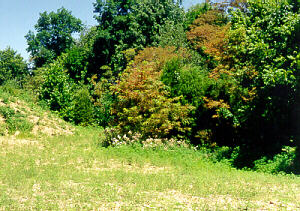

human health - possible future medical applicationsĬonsider the United Nations Environment Programme (UNEP) as an intergovernmental organization and the World Wide Fund for Nature (WWF) and Greenpeace as non‑governmental organizations.biological control (another example of negative feedback).soil aeration, pollination, fertilization, carbon sequestration, oxygen production ,climate regulation, etc public goods - value accrues to society instead of individuals.usually services or processes which benefit everyone.provide benefits but are not generally harvested/destroyed/sold.stabilize ecosystems (negative feedback cycles).Indirect values - more difficult to calculate natural products (medicines, textiles, fertilizers, pesticides, etc.food sources (‘heirloom varieties’ of many crops, i.e.private goods - value accrues to the owner of the resource.generally physical commodities of some sort.goods harvested & destroyed for consumption (eating) or sale in a market.The values of biodiversity can be classified as either direct values or indirect valuesĭirect values - can be (relatively) easily calculated Intrinsic value of the environment or right of individuals or species to exist.The idea of good stewardship (looking after the environment) and sustainable development for the good of future generations.Nature can provide inspiration for all kinds of artworks.Unknown value in the potential of the species for agriculture, medicine, genetic diversity and biotechnology.Species and habitat are direct natural capital, e.g.Some species are keystone species, which if removed from the ecosystem can lead to many other species becoming extinct.Preserving habitats is essential to preserving biodiversity. Species cannot survive outside of their natural habitat without human intervention, such as the habitats found in a zoo or aquarium, for example. More than half of Earth's terrestrial surface has been altered due to human activity, resulting in drastic deforestation, erosion and loss of topsoil, biodiversity loss, and extinction. As human populations increase, land use increases, and wild species have smaller spaces to call home. Habitat conservation for wild species is one of the most important issues facing the environment today - both in the ocean and on land. You should appreciate arguments based on ethical, aesthetic, genetic resource and commercial (including opportunity cost) considerations. You should also appreciate life support and ecosystem-support functions. Do you think that the conservation measures being taken today will be sufficient of preserve the Earth's biodiversity for the future?.If you are from a MEDC, how would your EVS differ from that of someone from a LEDC, or from someone who relies on the preservation of natural ecosystems for survival?.How would a technocentric view of biodiversity differ from an ecocentric one? Ho do different EVSs affect approaches to conservation?.in situ and ex situ) prevent environmental impacts, limit the extent of the environmental impacts, or restore systems in which environmental impacts have already occurred? How do different conservation measures (e.g.In what ways might the solutions explored in this topic alter your predictions for the state of human societies and the biosphere some decades from now?.How does your own value system compare with others you have encountered in the context of issues raised in this topic?.What value systems can you identify at play in the causes and approaches to resolving the issues addressed in this topic?.To what extent have the solutions emerging from this topic been directed at preventing environmental impacts, limiting the extent of the environmental impacts, or restoring systems in which environmental impacts have already occurred?.


 0 kommentar(er)
0 kommentar(er)
